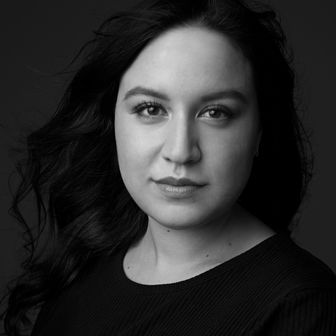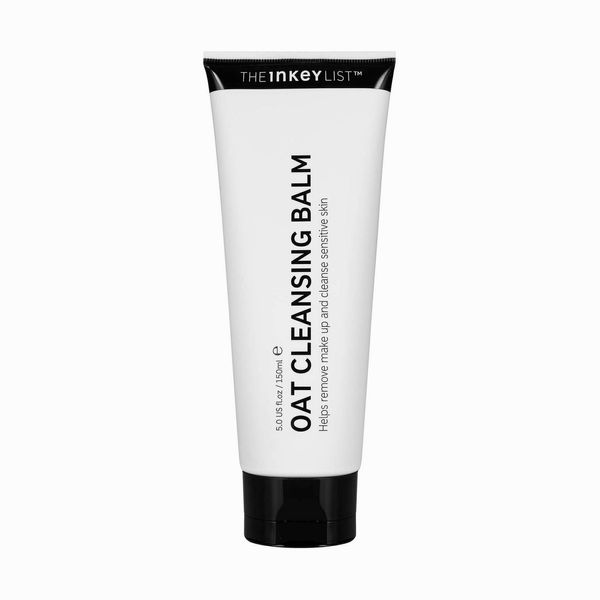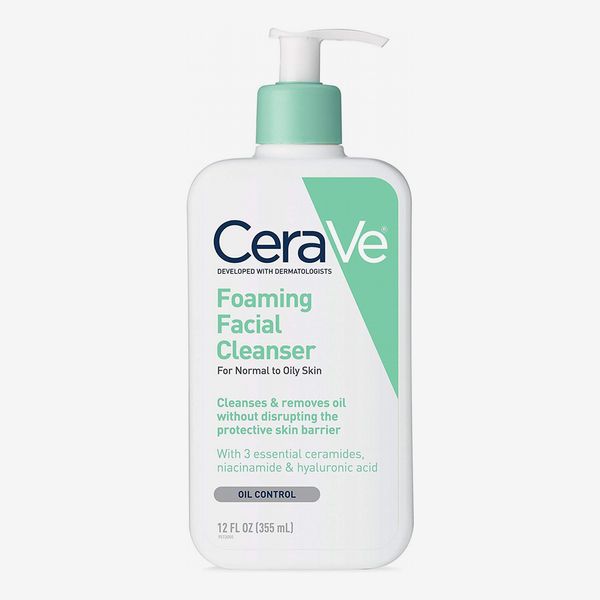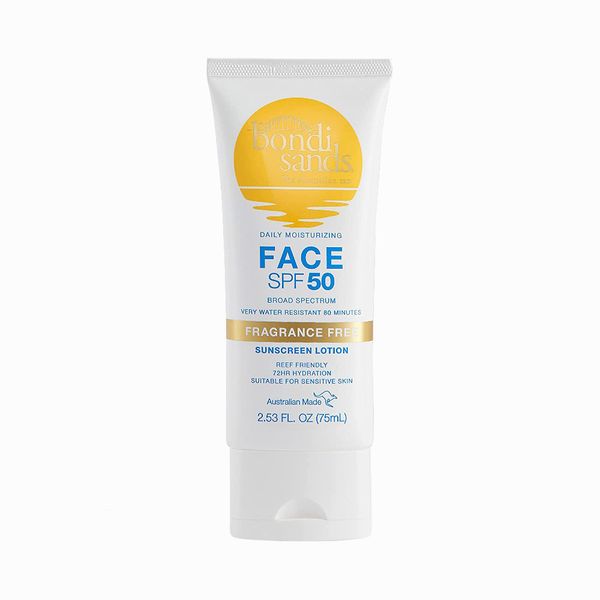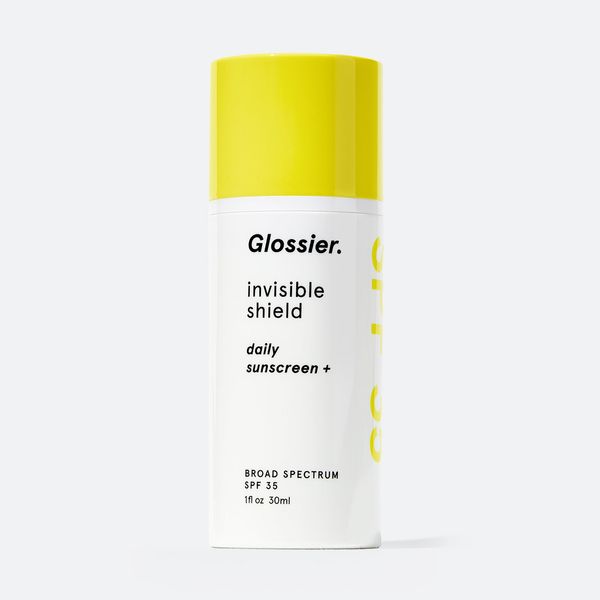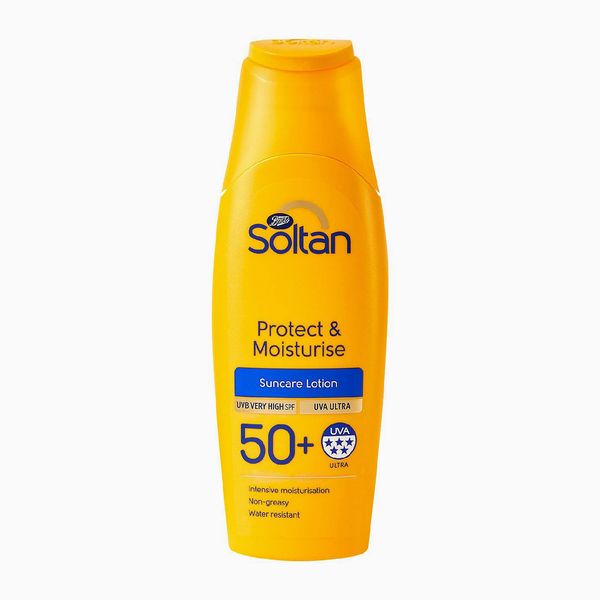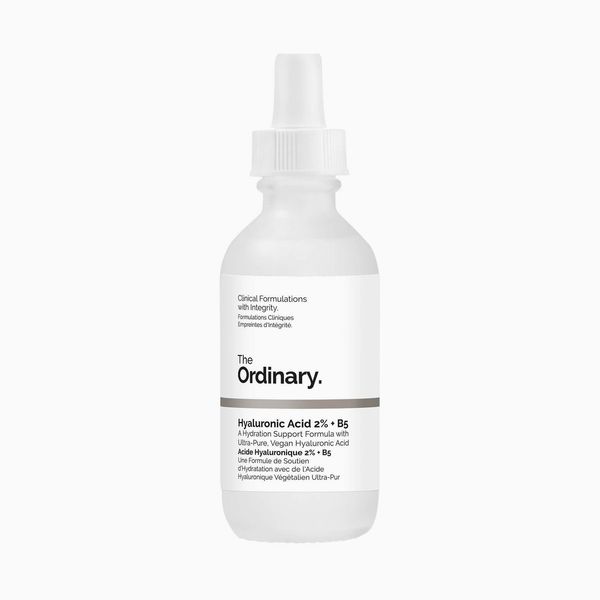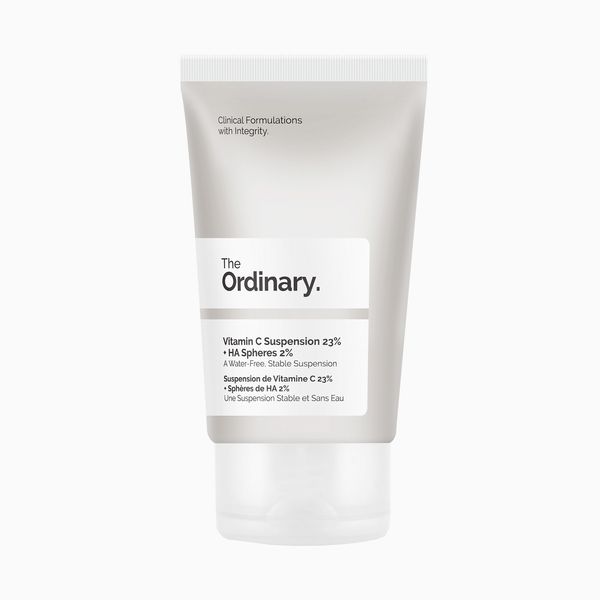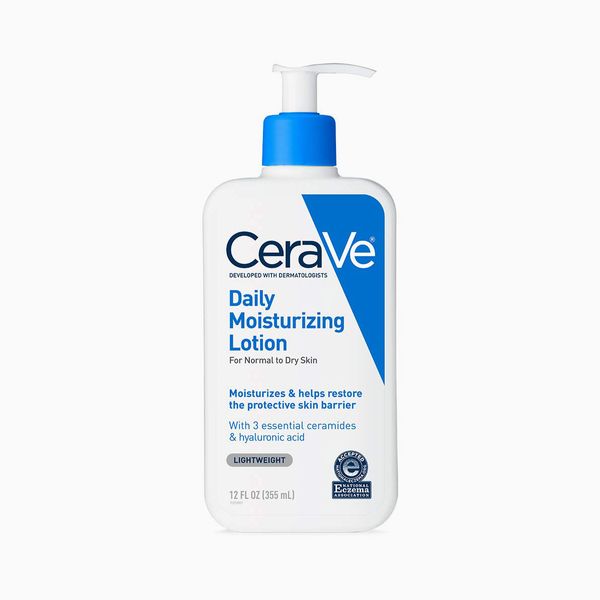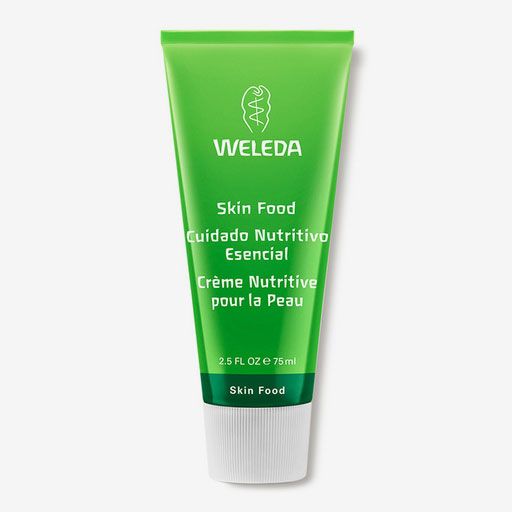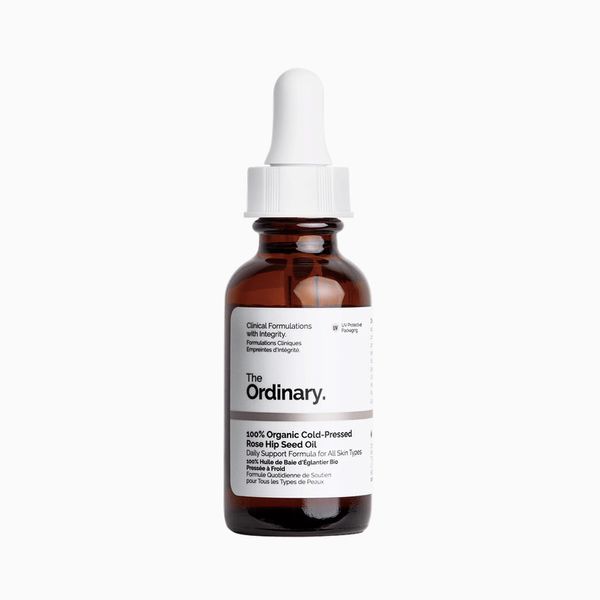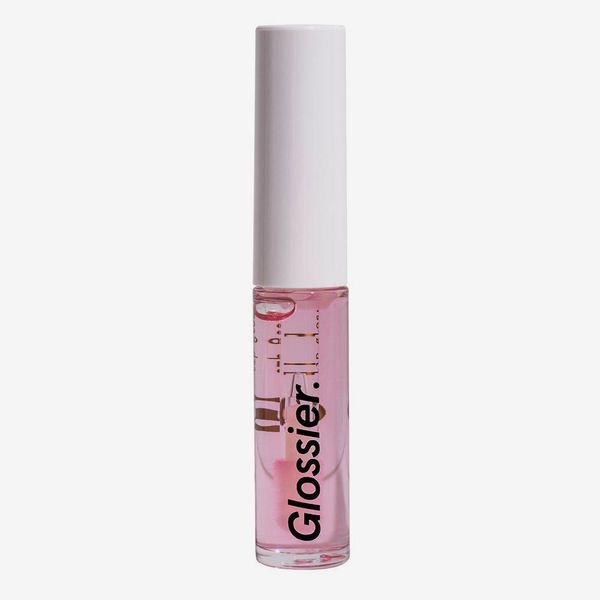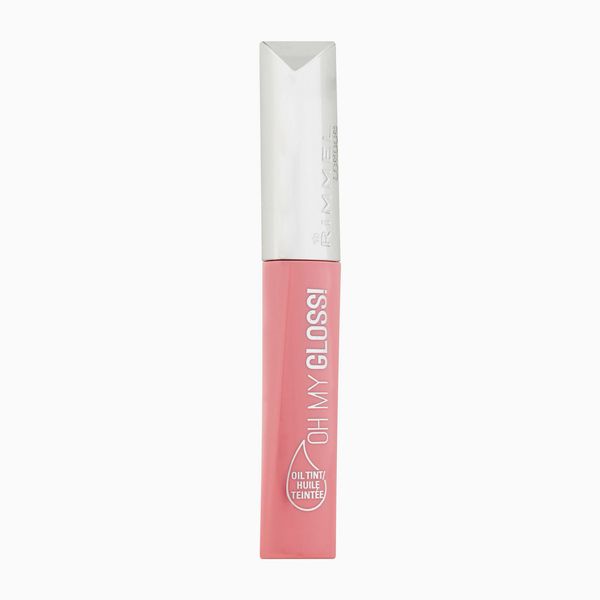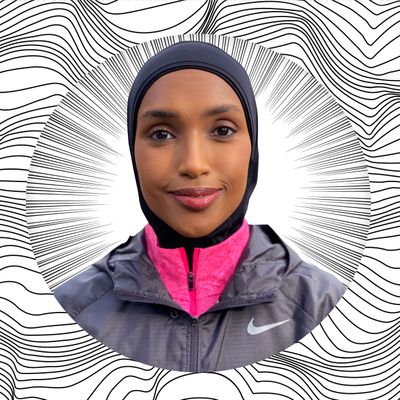
When Intisar Abdul-Kader says that she wants to summit Mount Kilimanjaro, she’s simply letting you know that it’s only a matter of time until she does, not a question of whether she actually will. After all, Abdul-Kader, who works as a patient and public involvement coordinator for the National Health Service in London, has already run four marathons and climbed 5,364 meters above sea level to Mount Everest’s base camp I; by comparison, Kilimanjaro stands at 5,895 meters.
Abdul-Kader enjoys crossing big achievements off her bucket list, but she’s also on a mission to prove that as a Black, Muslim, hijab-wearing woman, she can do everything just as well as anyone else. “I’ve always believed that you can’t be what you can’t see,” she says. “My mom, my aunties, my grandmother, my great grandmother — they’ve been around me my whole life, and they’ve always worn a headscarf. I thought, They did, so I’ll do it too, so I started wearing one at the age of 14. Now, you see all of these hijab bans and regulations coming up in the European Union. Islamophobia is so high around us, and combine that with racism and sexism, I’m battling and fighting every day by going out there running in a headscarf, by practicing yoga in a headscarf, by climbing Mount Everest in a headscarf, by getting scouted by Nike [and] Glossier in a headscarf.” She wants to remind everyone: “All of these things that I’m doing, I hope they inspire a young person to be like, ‘She did it, so I can do it, as well.’ Every day that we do what we do is a fight, and I’m going to keep fighting.”
Below, Abdul-Kader talked to the Cut about how she stays on top of her wellness, from skin care and veganism to training for the New York City Marathon.
On her definition of wellness: It’s so easy to say good food, skin care, all of these things, but at its core, wellness is happiness. We tend to forget that if you’re not happy within your life and yourself, that will reflect outward. And for me, being happy means doing the things that I love. Like, I absolutely love running. I’m also a certified yoga instructor, and I teach in my local community. The people that I teach are not the most flexible yogis doing headstands; they’re elderly, but they want to be active, especially after 18 months of lockdown. Seeing them smile contributes to my own wellness.
How COVID-19 changed her idea of wellness: During the first couple of months of the pandemic, everything was anxiety inducing. I would wear a mask while running for my safety and others around me, but back then, the minute you saw someone on your path, you would cross the road and hide behind a bush to avoid them. Some days I’d be like, “I want to go out for a run,” and then remember that I had to be extra careful outside, and I would just cancel the whole thing. Around week three, I said, “No, I need to do what I need to do.” It also helped to say, “We need to talk about things other than the pandemic,” because every conversation I would have was about COVID.
It really solidified that there’s no health without mental health. People tend to repeat that a lot, but it’s not just about going to therapy. Yes, therapy is important, and if you need help, seek help, but there are other things that we can do within our own life to encourage mental health, like taking a whole day for yourself.
On her love for running: I ran track in school, and then I went into cross-country. But road running came into my life later.
In 2010, I was diagnosed with multiple sclerosis (MS), which is an autoimmune disease. I remember when my symptoms started because it was August, and it was peaking hot in the U.K.. It was the first day of Ramadan, so I was fasting, and I got so wobbly and weak. My mom kept saying, “The first day is a long day. Maybe it’s that.” I thought, There’s something else happening. It was an internal feeling. That evening, after breaking the fast, I couldn’t feel my arm or my face, and I thought, Maybe it’s a stroke. We ran to the hospital, and it wasn’t a stroke. They sent me for all kinds of tests, and for me, it only took about two months to diagnose me with MS. People can live and die without knowing that they had MS.
When my MRI scan results came back to my neurologist, the doctor said, “You need to come in ASAP.” It was the day after my 24th birthday, and I remember asking, “Now that I know what it is, what’s next?” There was just a relief of knowing there was something behind why I was feeling how I was feeling, because the whole left side of my face had gone numb, and I had pins and needles all the way down my arm — even now, I have no sensation on my elbow up to my fingertips, and my left side is very weak compared to my right.
My parents flew me out to Germany for further tests. I was like, “I’ll have more scans, but the diagnosis won’t change.” But I did it for my parents because they were just so freaked out. I came back to London, and listen, I appreciate and I love my family, but there was a lot of mollycoddling and overprotectiveness. I’m grateful for it, but it was a bit suffocating. So, one day, I put on my running shoes, and I thought, I’m gonna go out for a run, because I needed to leave the house. I also needed to feel like I could do something even though I had this big diagnosis over my head. I was like, “No, I’m still an athlete. I’m still gonna go out and run.”
I remember running a 5K and downloading the Nike Run Club app, and that became my best friend. I started signing up for local races in my area. We have this run called the parkrun, and it’s become quite global now, so every Saturday that was my thing. The fact that I was active during my relapses, it made me stronger mentally and physically in dealing with my diagnosis. I’m not on any medications, and I’m grateful for that. The doctors I have around me were like, “Do what you need to do. Change your lifestyle. We’ll just keep monitoring you.”
Then I started signing up for marathons. I got a ballot bib the first time running the London Marathon — that hardly ever happens — and I ran for the MS Society. Having my family at the finish line was the best feeling ever. That opened the floodgates of me applying to run halves and fulls. Since then, I’ve run London twice, Berlin, Chicago, and I’ve got the New York City Marathon at the end of this year.
On preparing for the New York City Marathon: One of my very good friends, Amritpal Ghatora, is a running coach, and he’s running the New York City Marathon too. He’s a six-time world major marathon runner, so I reached out to him and asked, “Can you train me for New York because I really want to come in at a good time, and I heard New York is quite hilly.” He sent me this brilliant run plan, and it’s 16 weeks long. I also have a strength and conditioning coach that I see every Wednesday because running is not just about putting on running shoes — you also have to lift heavy and jump and work on your hip flexors and all the other things that help you prevent injury.
On runner’s high: It’s this feeling of being on top of the world. Once I come back home, it doesn’t matter how long the run was or how strenuous, I have a smile on my face. It’s like an illegal drug; that’s the best way to describe it. It’s all of the hormones that are making you feel like this, but you get this feeling of lightness.
On knowing your limits: There’s this Facebook group called Surviving Hijab, and it’s about empowering Muslim girls and women wearing the hijab headscarf. Like, we’re here, we’re out there, and we’re doing things that everybody else does while wearing a hijab. Especially now with all the hijab bans happening around the world, it’s obvious that we need to be more seen than before. The founder of the group, Manal Rostom, messaged me, “We’d love to have you on board.” The minute I told my parents, they were like, “Wow, okay. First marathons and now you want to do base camps.” [Laughs.]
As you go up, there are tea houses you stop at. You have your breakfast there, and then you go up and have lunch. Nepalese food is absolutely amazing, and they offered a vegetarian curry dish, so I would have that.
We hardly camped out. All of our nights, we stayed in tea houses. You’d have a wooden bed, essentially a wooden slab, and you’d put your sleeping bag on there. At some tea houses, a shower would be three minutes for six dollars, and as you went up, the shower price would go up. Most of the girls, the first thing they’d go for was Coke and Pringles. Me, I was like, “Can I get a hot shower?” That was my priority.
Going up, the oxygen levels go down, and you’re on these tablets that help with dizziness and acclimating to the thin air. The climbing up was fine, it was the coming down that I struggled with. It took us ten days going up, but then coming back down, it was six days. The speed at which we were going was too much for me. It was also a combination of the fatigue and the adrenaline, and some nights, it was so cold that at night I slept with my boots on. On one of the final days, I tried to get my boots on, and I couldn’t, and I cried. That’s when I broke down, and I thought, I can’t do this anymore. I really cannot.
Obviously, I’m dealing with MS as well, so certain symptoms started to become more visible, like having difficulty walking and talking. But the sherpas that we had were absolutely brilliant. I had one sherpa who summited Everest more than once, and he was walking next to me the whole time because I couldn’t put a foot in front of the other, and it’s so icy that you can easily get stuck or fall or hurt yourself.
When we came back down to Namche Bazaar, which is a camp that you stay for two days on your way back so you can acclimate, that’s when I got Wi-Fi and got all my messages. For five days I didn’t have service. When I called my mom, she started crying over the phone and asking, “Are you alive?” I remember thinking, I’ve got two more days of descending. I went to the top. I can’t do it anymore. I told my dad, “I want to come back down. There’s a helicopter going out tomorrow. I’m gonna come back down to Kathmandu, Nepal, that way and go back to the hotel and have a real shower.” Me and a couple of other girls took that option, which meant we had two days in the city. I don’t regret that because I had experienced everything with everybody else, but by day 12, I was just mentally and physically drained.
But, that said, it was so beautiful — scenery that I cannot describe and that no picture I took will ever do justice. When I got to the top, I cried, and my tears would freeze. It was the best thing I’ve done in my life.
On skin care: My skin type is normal to dry; my mouth and eye area can be quite dry. I have some discoloration, so retinol has become a very important part of my skin care.
In my teens, I had exams and I was studying, so I had breakouts around my face. There was this one day when my acne spots were all over, and I made my dad take me to the emergency room. The doctor looked at me like, I’ve got people with broken limbs, and you’re here with spots. It was then that I thought, I’m gonna look after my skin because I don’t want to do another visit to the hospital. So I always double cleanse my face, especially after a night out, even though you just want to put on your pajamas and go to bed. I start with the Inkey List Oat Cleansing Balm and follow it up with the CeraVe Foaming Facial Cleanser. Growing up, my mom was always like, “Do not use your body towel on your face!” I had always had a separate face towel, and I’m glad that stayed with me.
I have always been very aware of sun care because my mom is originally from Yemen. She grew up in Sana’a — it’s very hot and very sunny. I was also born and raised in Abu Dhabi, so SPF was always in my life, but I took it more seriously as I started running. Having brown skin means you don’t want a white cast, so I use the Bondi Sands Daily Face Lotion SPF 50+, which is absolutely brilliant, and the Glossier Invisible Shield SPF 35 — I tend to alternate between the two. Body SPF, that’s very important as well. I like the Soltan Protect & Moisturize Lotion SPF 50+.
As for the rest of my routine, I like the Ordinary Hyaluronic Acid 2% + B5 and the Ordinary Vitamin C Suspension 23% + HA Spheres 2%. For moisturizer, I like the CeraVe Daily Moisturizing Lotion and Weleda Skin Food. Then I use the Ordinary Rose Hip Seed Oil. Honestly, almost all my skin care comes from these two brands. I used to think that skin care had to be these big, expensive brands, but CeraVe and the Ordinary work for me brilliantly, and you can find them everywhere in the U.K. as well. For lips, I’m more of a lip gloss person, so I’ll use the Glossier Lip Gloss in “Holographic,” and I like the Rimmel Oh My Gloss! Oil Tint in “Smart Pink.”
On how she eats: I became a vegan because there’s all this research about how changing lifestyles can help with MS — how to live with the symptoms since you can’t make MS go away. I was a pescatarian before, and I wasn’t a fan of cheese anyway, so I didn’t miss it when I became a vegan.
I’m coming from a Middle Eastern and African background, so it’s pretty funny when you tell people that you don’t eat meat. Especially when I go back home, they’re like, “You don’t eat meat? So what do you live on? How are you surviving?” Like, there are other things! I was working in Rio de Janeiro during the Zika epidemic, and in Brazil, if you’re a vegetarian, you eat chicken. [Laughs.] They were like, “Oh, you’re vegetarian? Here’s chicken!” It was the funniest experience.
While my veganism started off as a health choice, now, it’s an environmental decision as well. Reading up and seeing how much damage we do to the world, I thought, It’s one less person that’s not eating meat, and that makes me feel good.
